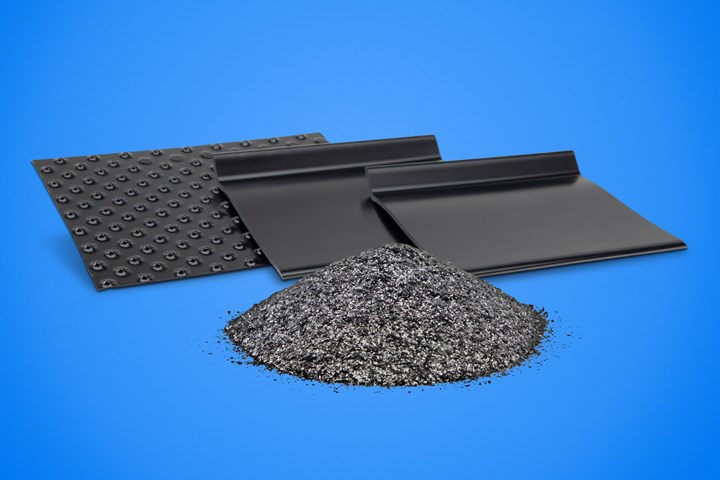Graphite Flame Retardant Additive for Construction, Aerospace, Mass Transit Applications
NeoGraf’s new GrafGuard 280-50N expandable graphite flake FR additive for thermoplastics said to offer highest on-set temperature on the market
A new graphite-based flame retardant additive designed for plastics applications requiring excellent flame retardancy in construction (i.e., PP roofing), aerospace and mass transit markets has been added to the lineup of expandable graphite flake, non-halogenated, non-flammable, flame retardant additives from NeoGraf Solutions, Lakewood, Ohio.
GrafGuard 280-50N is specifically targeted to the thermoplastics industry, especially specialty polymers with high processing temperatures including composites and multi-functional systems with high melting points for both injection molded and thermoformed applications. With a particle size of 50 mesh or 300 microns, GrafGuard 280-50N has an on-set temperature of 536 F, reportedly the highest on-set temperature on the market. It allows users to process materials at higher temperatures to take advantage of the intumescence provided by the GrafGuard family of products which form a large, thick char layer protecting the base polymer from the heat of the flames. Reportedly, there is no reaction below 536 F with no volatile loss and no visible puffing.

According to product manager Jeff Gough, the new GrafGuard 280-50N offers customers use in a much wider range of thermoplastics including PP, PS, PET, nylon, and ABS than the company’s previous products. Existing GrafGuard customers using a material dryer system to remove excess moisture or solvent from their systems often find the drying temperature is the maximum processing temperature which limits the grades of GrafGuard graphite they can use. “If they need to dry the material at very high temperatures to drive off solvent or quickly drive off moisture, they can use a higher temperature if they switch over to the new GrafGuard 280-50N material,” says Gough.
Depending upon the polymer system, the processing temperatures have to be higher than the melt temperature of the polymer so many thermoplastics are processed above 428 F, which can be problematic for the company’s previous high temperature material GrafGuard 250-50N. The new GrafGuard 280-50N material is much more latent at these temperatures and above to about 536 F, allowing users to use typical processing parameters and simply add the GrafGuard 280-50N as an active flame retardant.
According to NeoGraf, the new flame retardant additive is a first in the thermoplastics arena as there are not any graphite additives on the market that will work due to the high processing temperatures. “There are some chemicals that can compete with these materials, but most of the traditional fire retardant chemicals react around 482 F, so they would be difficult to incorporate into high temperature applications. The primary exception would be magnesium hydroxide, which we recommend as a synergistic material to be used with GrafGuard 280-50N,” explains Gough.
Related Content
-
Farrel Pomini Compact System Billed as Ideal for WPC Processing
Machine can be used to cost-effectively extrude composite decking by bypassing pellet milling.
-
Infrastructure May Prove Big Landing Spot for Recycled Plastics
As the government funds infrastructure improvements, a hot topic at NPE2024 – exploration of the role recycled plastics can play in upcoming projects, particularly road development.
-
LyondellBasell Showcasing End-Use Applications in 5 Key Markets
NPE2024: LYB is highlighting applications in circularity, mobility and transportation, food and medical, consumer goods/lifestyle, and infrastructure/building and construction.













